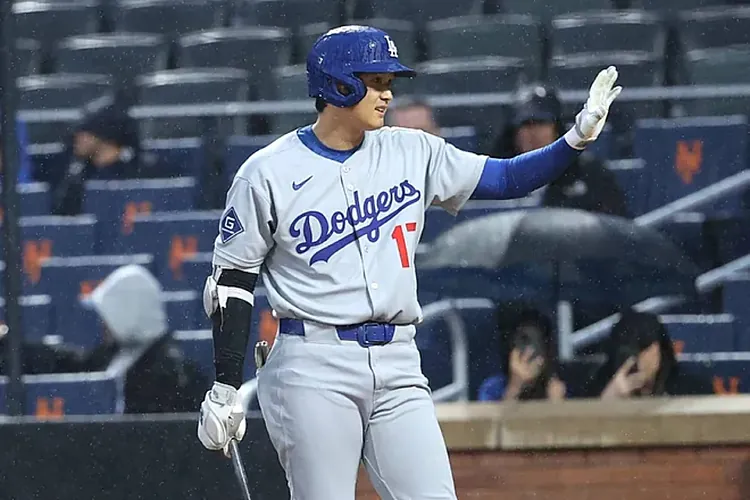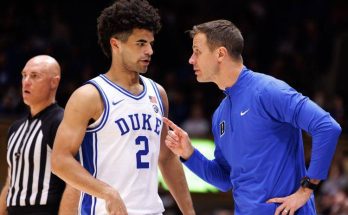The Los Angeles Dodgers, one of Major League Baseball’s most storied and successful franchises, have long been known for their strategic approach to building championship-caliber teams. In recent years, they have pursued star talent with a level of determination and patience that reflects their commitment not just to winning, but to maintaining a sustainable culture of excellence. One of the most intriguing and exciting possibilities on the horizon for Dodgers fans has been the potential acquisition of Shohei Ohtani, the two-way superstar whose combination of pitching and hitting skills has revolutionized modern baseball. Despite numerous challenges and setbacks, the Dodgers have not given up hope of seeing Shohei Ohtani pitch for their team this season. This optimism has been reignited once again as the organization has marked a date on the calendar that symbolizes their ongoing belief that Ohtani could yet become part of their roster. This renewed determination to integrate Ohtani into their pitching rotation speaks volumes about the Dodgers’ long-term vision and their understanding of what such a player could mean for their pursuit of another championship.
Shohei Ohtani’s rise to superstardom in Major League Baseball has been nothing short of remarkable. He has captivated the baseball world not only with his raw talent but also with his rare ability to impact the game in multiple facets simultaneously. His pitching velocity, movement, and command have placed him among the elite arms in the league, while his offensive prowess, including home runs, speed on the bases, and clutch hitting, has made him a nightmare for opposing teams. For the Dodgers, a team that has consistently sought to enhance its pitching staff with top-tier arms while also maintaining a deep and versatile lineup, Ohtani represents a unique opportunity. The idea of adding a player who can start games on the mound and contribute significant value with the bat aligns with the Dodgers’ philosophy of maximizing player versatility and leveraging every advantage available.
The fact that the Dodgers have not given up hope on seeing Ohtani pitch this season despite the inherent difficulties involved reflects the complexities of professional baseball, particularly when it comes to managing player health and team dynamics. Ohtani, having dealt with injuries in previous seasons, requires careful management to ensure that his workload does not compromise his health or performance. The Dodgers have been methodical in their approach, balancing the desire to use Ohtani’s talents with the need to preserve his longevity. This balancing act is emblematic of modern baseball’s increasing emphasis on data-driven decisions and player wellness. By marking a date on the calendar, the Dodgers signal their commitment to a strategic timeline — one that allows for recovery, preparation, and integration of Ohtani into the team’s framework at the optimal moment.
This anticipation also highlights the broader narrative around Ohtani’s place in baseball and the significance of his presence in the American League and National League dynamics. Ohtani’s unique two-way capabilities have challenged conventional wisdom in baseball for decades, where specialization has been the norm. His ability to both pitch and hit at an elite level brings a fresh dimension to the game, and his potential addition to the Dodgers would serve as a landmark moment in National League history. It would showcase a willingness by one of the league’s flagship franchises to embrace innovation and risk, blending traditional strengths with contemporary talent management strategies.
Moreover, the Dodgers’ patience and optimism reflect the competitive environment of Major League Baseball, where teams are constantly navigating uncertainties related to player availability, injuries, and performance fluctuations. Ohtani’s situation is a prime example of this environment. Teams often face the dilemma of when to introduce a player back from injury or limited activity to maximize impact without risking further setbacks. For the Dodgers, the process has involved extensive evaluation, consultation with medical experts, and collaboration with Ohtani and his representatives. This meticulous approach underscores the franchise’s dedication not only to winning but to responsible player stewardship, ensuring that their investment in a player like Ohtani is handled with the utmost care.
The marking of a specific date on the calendar for Ohtani’s pitching debut with the Dodgers is more than just a symbolic gesture; it represents a concrete step in the organization’s operational plan. It signals that the Dodgers have mapped out a timeline that factors in current training progress, recovery benchmarks, and team needs. This planning is crucial because the timing of Ohtani’s pitching debut will influence everything from the team’s rotation management to their lineup construction. The Dodgers will have to consider how best to leverage Ohtani’s dual skills, potentially reshaping their approach to both offense and defense. This strategic recalibration could have ripple effects throughout the season, affecting game-day decisions, roster moves, and even the team’s playoff positioning.
Furthermore, the excitement surrounding Ohtani’s potential pitching role with the Dodgers is palpable among fans, analysts, and the broader baseball community. His presence on the mound would undoubtedly energize the fanbase, drawing attention and enthusiasm that extend beyond the Los Angeles market. Ohtani’s ability to generate headlines, sell tickets, and inspire younger players cannot be understated. For the Dodgers, capitalizing on this excitement offers both competitive and commercial benefits. The team’s marketing and outreach efforts can leverage Ohtani’s unique appeal, boosting engagement and deepening connections with fans. This dynamic also aligns with the modern sports industry’s focus on creating compelling narratives and personalities that resonate with audiences worldwide.
On the field, the integration of Ohtani as a pitcher could address specific needs within the Dodgers’ rotation. While the Dodgers have long been known for their strong pitching staffs, the wear and tear of a long MLB season invariably create challenges that require depth and flexibility. Ohtani’s addition could provide a boost in quality innings, reduce the burden on other starters, and add a new wrinkle to opposing hitters’ preparation. His pitching style, which combines high velocity with sharp breaking pitches, could complement the existing arms in the rotation, creating a more balanced and formidable pitching staff. This potential improvement in pitching depth is especially critical in a postseason context, where rotations shorten and every inning matters.
Additionally, the Dodgers’ ongoing hope and planning around Ohtani highlight the evolving nature of roster construction in modern baseball. Teams are increasingly valuing versatility, durability, and the ability to adapt to in-game situations. Ohtani embodies all these qualities, and the Dodgers’ interest in his pitching demonstrates a forward-thinking approach that recognizes the shifting dynamics of the game. It is a testament to the organization’s willingness to innovate and challenge traditional roles, embracing the possibilities that arise from a player who can influence the game in multiple ways. This evolution also speaks to the broader trend in MLB where player development and utilization are becoming more holistic, blending athletic ability with strategic deployment.
From a personal and human perspective, the Dodgers’ optimism about Ohtani’s pitching return reflects the respect and admiration they have for the player himself. Ohtani’s work ethic, professionalism, and humility have endeared him to teammates, coaches, and fans alike. The Dodgers’ belief in his ability to contribute meaningfully to the team is rooted not only in his raw talent but also in his character and commitment. This respect is evident in the way the organization communicates about his progress and in the patience they exhibit as he navigates the challenges of recovery and reintegration. It speaks to a culture within the Dodgers that values the person as much as the player, fostering an environment where talent can flourish under supportive and thoughtful leadership.
The ongoing anticipation of Ohtani’s pitching debut also has implications for the broader competitive landscape of MLB. The Dodgers, by nurturing this possibility, are positioning themselves as serious contenders who are willing to make bold moves and investments to secure a competitive edge. Ohtani’s dual-threat capability could set a new standard for what is possible in terms of player contributions, prompting other teams to reconsider their approaches to player roles and health management. The Dodgers’ faith in Ohtani serves as a beacon for innovation in the sport, encouraging others to explore the boundaries of talent utilization and strategic planning.
In summary, the Los Angeles Dodgers’ refusal to give up hope on seeing Shohei Ohtani pitch this season and their decision to mark a date on the calendar is a multifaceted development that encapsulates the team’s strategic vision, respect for player health, and embrace of innovation. It reflects their deep understanding of Ohtani’s unique value, both as a player and as an inspirational figure, and highlights their commitment to leveraging that value to enhance their competitiveness. The timeline they have set signals a carefully calibrated approach that balances ambition with prudence, underscoring the complexity of integrating a player of Ohtani’s caliber. As the season progresses, all eyes will be on the Dodgers and Ohtani, watching to see if this marked date will indeed herald a new chapter in Dodgers baseball—one defined by the thrilling presence of a true two-way superstar pitching on the mound while continuing to electrify fans with his bat. The hope and anticipation surrounding this possibility make for an exciting storyline that blends the art and science of baseball, embodying the spirit of competition and the pursuit of greatness that defines the sport.


